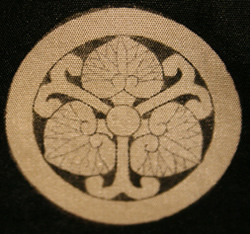 Japanese Historical
Eras
Japanese Historical
Eras
Japan is an archipelago off the coast of East Asia. The capitol is Tokyo which, along with the neighboring Yokohama, creates the world’s most populous metropolitan
region. Japan proper has four main islands which are from North to South, Hokkaido, Honshu (largest, most populous and location of the capital and most major cities), Shikoku, and Kyushu. There are also several smaller islands.
Periods of Japanese history are classified by shoguns:
- Shogunate: (names and dates refer to families)
- Minamoto family and their successors with their capitol at Kamakura (1192-13233)
- Ashikaga with their capital at Kyoto (1338-1597)
- Tokugawa (aka Edo) with their capital at Yedo, later Tokyo) (1603-1867.
- Modern era
- Meiji restoration: beginning of modern Japan (1867-1912)
Japanese history is also defined by historical periods:
Early Historical Period
- Asuka/Nara Period 550 BE - 794 AD
- Heian Period 794 - 1185
Medieval Period
- Kamakura Period 1185 - 1333
- Moromachi (Muromachi) Period 1333 - 1568
Early Modern Period
- Momoyama Period 1568 - 1600
- Edo (Tokugawa) 1600 - 1868
Early-Edo
- Kan’ei 1624-44
- Meiriki 1655-58
- Manji 1658-61
- Kanbun 1661-73
- Enpo 1673-81
- Tenna 1681-84
- Jokyo 1684-88
Mid-Edo
- Genroku 1688-1704
- Shotoku 1711-1715
- Kyoho 1716-1736
- Horeki 1751-1764
- Meiwa 1764-1772
- An’ei 1772-1781
- Tenmei 1781-1789
Late-Edo
- Kansei 1789-1801
- Bunka 1804-1818
- Tenpo 1830-1844
Modern Period:
- Meiji Restoration 1868-1912
- Taisho 1912-1926
- Showa 1926-1989
- Heisei (Emperor Akihito) 1989-2019
- Reiwa (Emperor Naruhito) 2019-present
Last updated: 12/8/2020
 Japanese Historical
Eras
Japanese Historical
Eras Japanese Historical
Eras
Japanese Historical
Eras